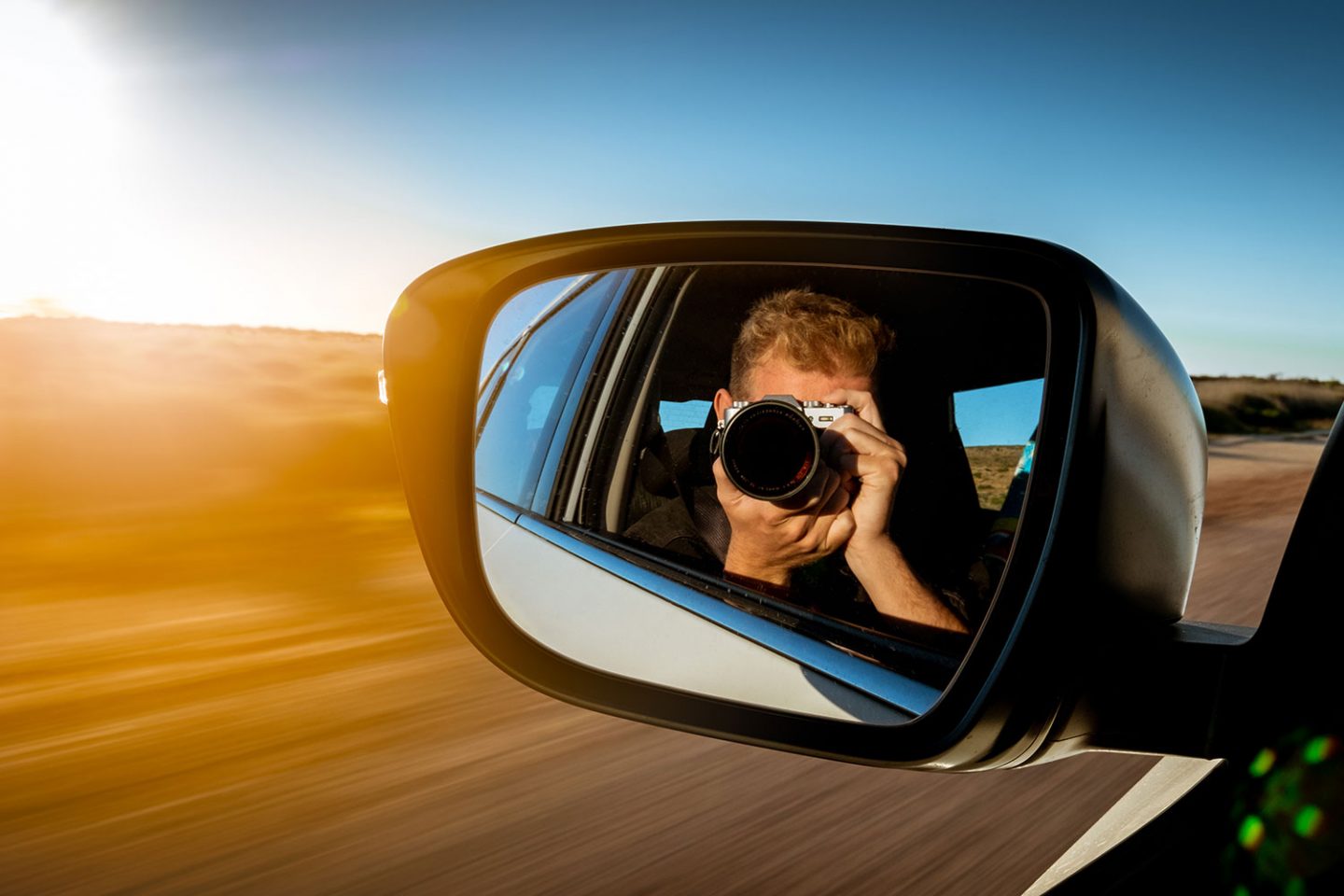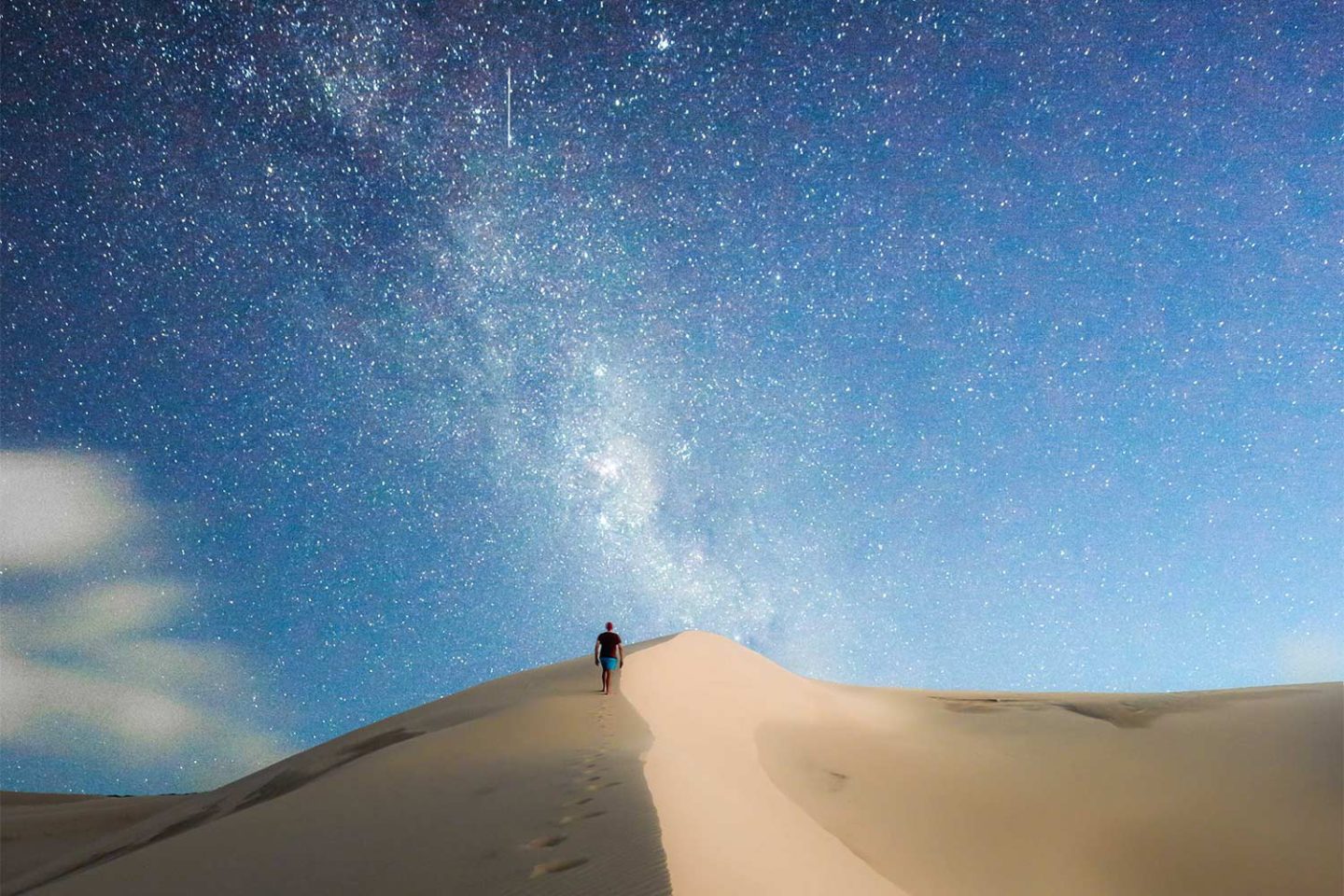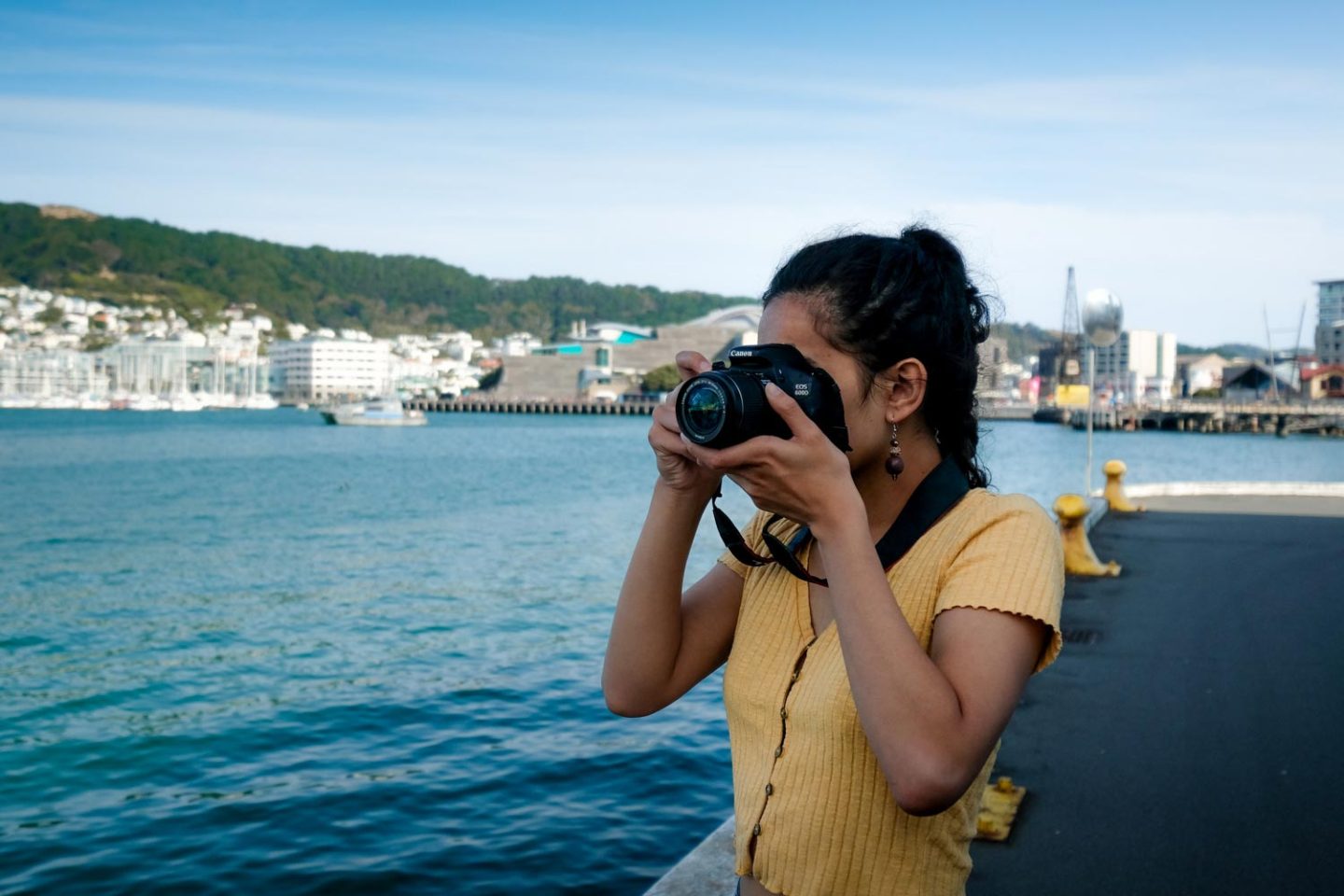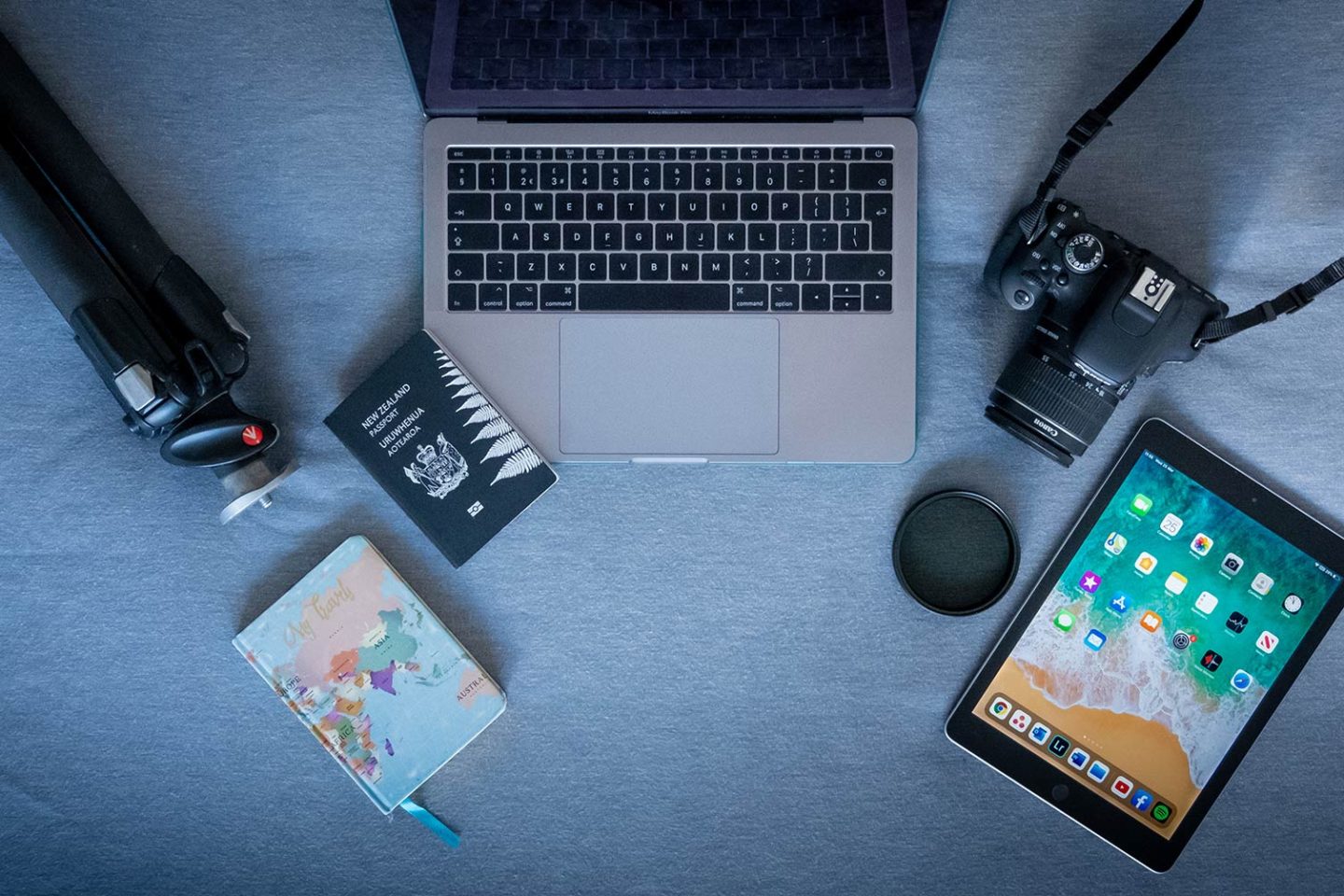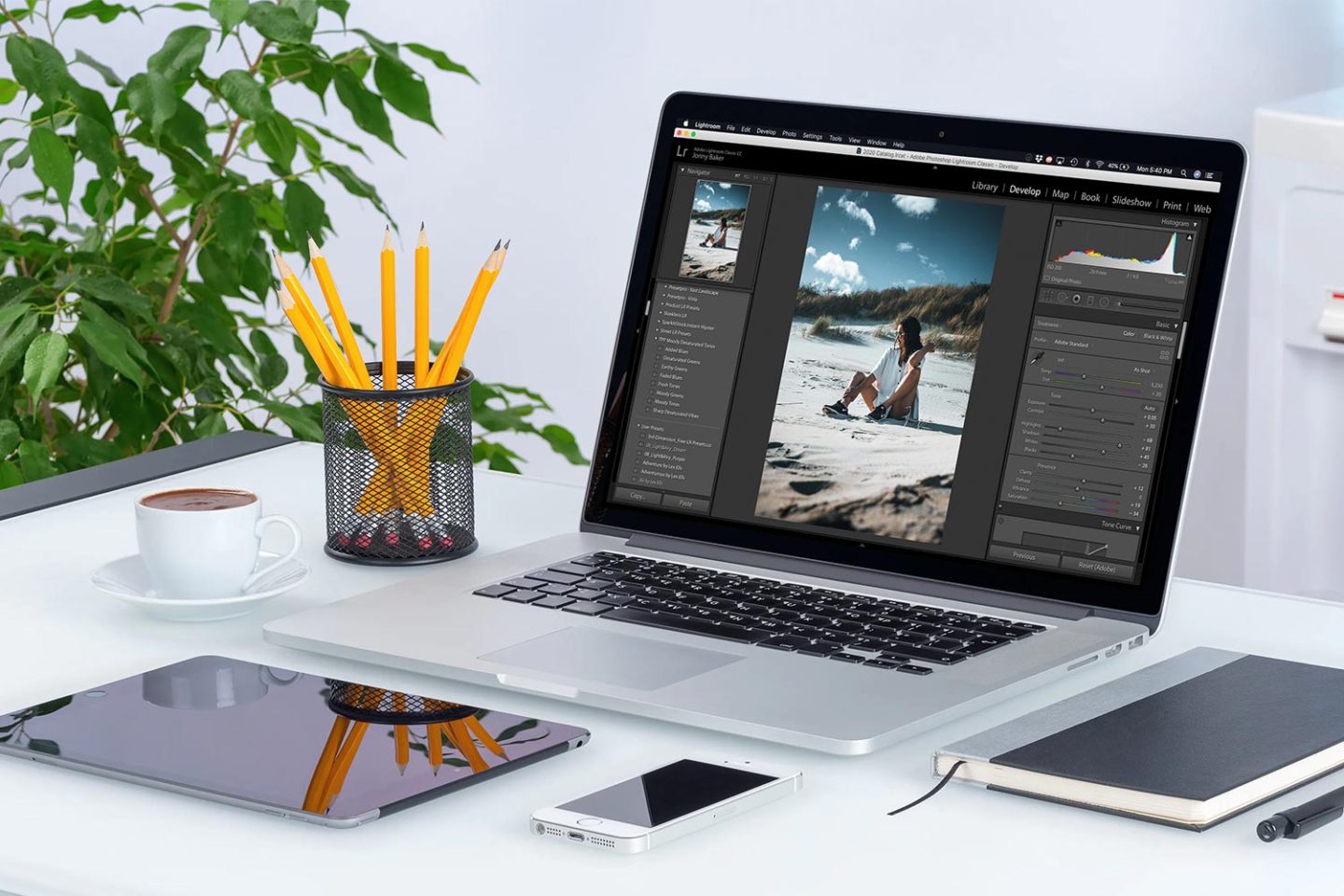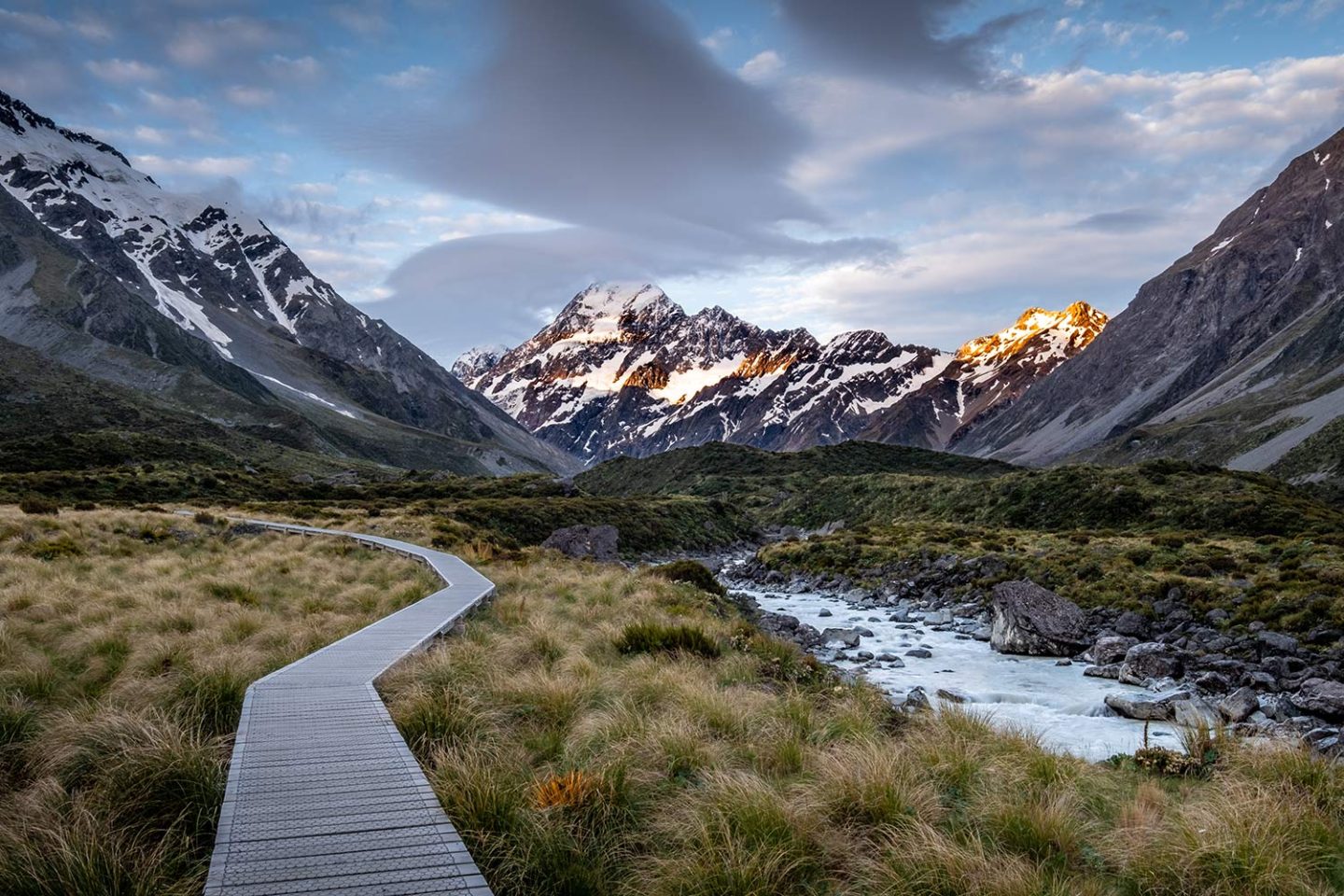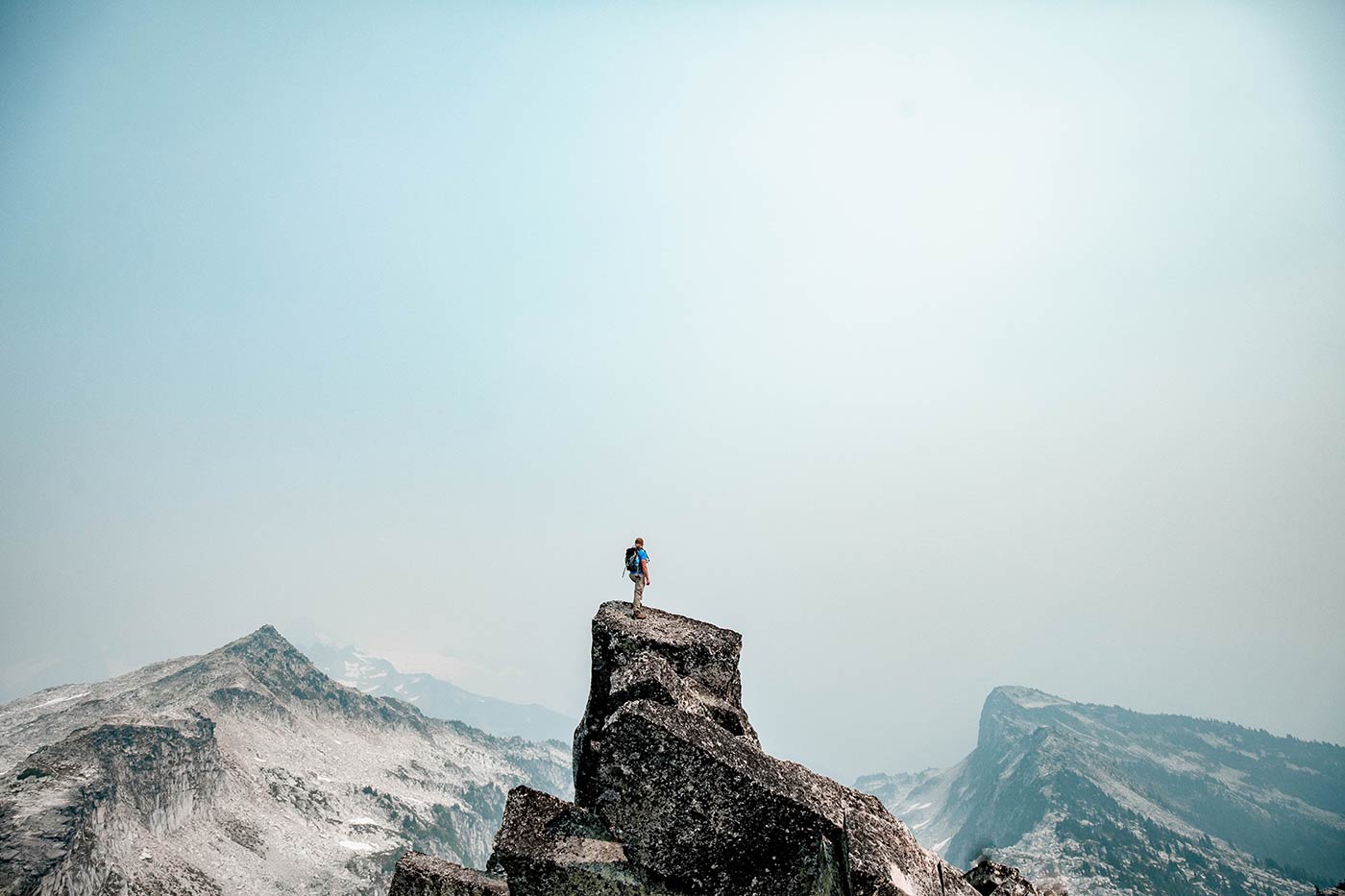This article may contain affiliate/compensated links. For full information, please see our disclaimer here.
So you’ve got your next trip planned and if you’re like me you’ll be thinking about all the amazing photos you’re going to be taking. Well if you are, you’re going to need a camera to get those awesome travel photos and I’m guessing if you’re reading this, the camera on your phone just isn’t going to suffice. Well luckily you’re in the right place, mirrorless cameras have proven to be an extremely popular choice for travelling. I’ve put this guide together to help you navigate all the different options available and try to help you find the best mirrorless camera for travel photography.
In this article, we will cover everything you need to know when you’re looking to buy a mirrorless camera. We will go over what exactly a mirrorless camera is, what to consider when buying a mirrorless camera and most importantly I will share with you what is the best mirrorless camera for travel photography.
- What Is A Mirrorless Camera?
- Mirrorless Cameras Vs DSLR’s
- Is a Mirrorless Camera The Right Option For Me?
- Things To Keep In Mind When Buying a Mirrorless Camera
- The Best Mirrorless Camera For Travel Photography
- Final Thoughts
- Other Resources
What Is A Mirrorless Camera?
As you can probably tell from the name, the defining feature of a mirrorless camera is the fact that it doesn’t have a mirror inside it. To understand this properly you need to know why the absence of a mirror inside the camera is important. First off we need to know what an SLR is, or more importantly what a DSLR camera is.
An SLR or single lens reflex is a type of camera design that uses a mirror and prism system. It is a design that has been used for decades as the go to camera for professionals and amateurs alike. An SLR camera is an analogue camera that uses film to expose your photos, and a DSLR is the digital invention that uses a sensor to expose your images instead.
With an SLR and DSLR, when you look through the optical viewfinder you see exactly what will be captured through the lens of the camera. The way this works is that light is reflected through the lens of the camera, this light is then reflected up through the camera using a series of mirrors until an image is seen through the optical viewfinder. So when you look through the viewfinder of a DSLR, you are actually viewing an image that has been reflected up through the lens. When you actually press the shutter button and take a photo the mirror flips up to allow the light to pass through onto the camera’s sensor behind.

The key difference between a DSLR and mirrorless camera is the absence of a mirror, so how does a mirrorless camera work exactly? Well, instead of using an optical viewfinder to view what you are taking a photo of, mirrorless cameras use an electronic viewfinder and/or an LCD display on the back of the camera. This electronic viewfinder and LCD screen show you a digital preview of what you are photographing, straight from your image sensor. There are many benefits to this which I will discuss a little later.
The term mirrorless can sometimes be a little confusing as there are lots of other types of cameras that don’t use mirrors but don’t come under the bracket of a mirrorless camera. Cameras such as point-and-shoot or compact cameras, and GoPros are all not considered mirrorless. This is because the term mirrorless camera has come to describe digital interchangeable lens cameras which are similar to DSLRs, with similar features but lack the mirror or optical viewfinder.
Mirrorless Cameras Vs DSLR’s
If you want a camera that you know is going to produce really great travel photos, for the everyday consumer there are two clear choices, either a DSLR or mirrorless camera. There are pros and cons to both options but when it comes to travel photography I believe that a mirrorless camera is the better option. Both cameras are capable of extremely high image quality and in many ways are very similar. Though one defining factor that means that mirrorless cameras are much more suited to travel photography, is their size and weight.
As I explained earlier, mirrorless cameras don’t need mirrors inside them and this means that they can be a lot smaller and lighter than their DSLR counterparts. If you have ever used a DSLR before you will understand how big and bulky they can be. Travelling with a big and bulky camera, as it turns out, isn’t any fun and can actually mean you miss out on getting photos. There have been many times I’ve left my DSLR behind because of its size, only to miss out on great photos and it’s one of the reasons I invested in a mirrorless camera myself. The quote “The best camera is the one you have with you” is something I like to follow and luckily with a mirrorless camera this is extremely possible.
Is a Mirrorless Camera The Right Option For Me?
Although a mirrorless camera can be a great option for a traveller, there are a few reasons why it might not be the perfect option for everyone. Below, I will share some of the pros and cons of a mirrorless camera so you can decide whether it will be a good fit for you.
Pros of Mirrorless Cameras
- A lot smaller and lighter than DSLRs
- Really great image quality
- Interchangeable lenses
- High video quality
- Electronic viewfinder shows preview of image with the exact exposure settings and corrections applied in real-time.
- The autofocus systems in mirrorless cameras are normally far better than DSLRs
Cons Of Mirrorless Cameras
- Battery life is a lot shorter than DSLRs as the viewfinder and LCD screen uses more energy than a DSLR’s optical viewfinder
- There is less selection of lenses compared to a DSLR
- Most mirrorless cameras have a start-up lag which means you might miss some shots if the camera falls asleep
- Can be expensive as you have to invest in both the camera and lens or lenses
Things To Keep In Mind When Buying a Mirrorless Camera
When it comes to choosing the best mirrorless camera for travel photography, there are many aspects to consider. There are so many mirrorless cameras available nowadays which are all suited to different purposes so it’s very important you do your research properly. It can however be very easy to get lost in all the technical jargon when it comes to cameras so to make your life a little easier I will share with you the things you should be considering when buying a new mirrorless camera.
Price
One of the most important things to consider when you’re buying a new camera is the price you’re willing to pay. Mirrorless cameras can range anywhere between $400 for the most basic model and up to $5000 for the most advanced professional option. When it comes to deciding how much you would like to spend, you should ask yourself a few things. Think about the budget you have, what you are going to be using the camera for, how much use the camera is going to get and what sort of travelling you are planning to do. Once you know the answers to all these questions it will make it a lot easier to choose what mirrorless camera will be right for you.
Sensor Size
A very important aspect to consider when buying a new mirrorless camera is the sensor size. The sensor is the part of the camera that sits behind the lens that actually records and creates your photo into a digital file, so understandably it’s very important.
Camera sensors come in a variety of sizes from the small camera sensors that you will find in your smartphone’s camera, all the way up to the largest camera sensor that you will find in professional cameras. Generally, you will find the larger the sensor is, the better the quality of your photos. Also larger sensors tend to perform better in low-light situations, have a better depth-of-field and can mean less diffraction in your photos. If you wanted to find out more on this, this article explains the effect of a larger sensor size perfectly.
Although there are a lot of reasons why a bigger sensor can be great, sometimes for travel photography a smaller sensor can actually be more beneficial. With a large sensor you will find the camera will be a lot bigger and heavier than a camera with a smaller sensor. For travel, this isn’t always for the best which is something I covered earlier when we were comparing mirrorless cameras and DSLRs.

There are three main sensors you are likely to find in mirrorless cameras. These are Micro Four Thirds which is the smallest, APS-C and Full Frame which is the largest.
Micro Four Thirds
The Micro Four Thirds sensor system also referred to as MFT and M4/3 is a sensor that was released by Olympus and Panasonic in 2008. The imaging area of the sensor measures 17.3mm x 13.0mm which is around 9 times larger than the sensors used in compact cameras. The Micro Four Thirds system uses an imaging aspect ratio of 4:3 which is similar to that of compact cameras.
APS-C
APS-C or Advanced Photo System type-C are quite popular sensors that are used by a large variety of camera manufacturers such as Fujifilm and Canon. The sensor size can range between 20.7mm x 13.8mm to 28.7mm x 19.1mm but is generally 24mm x 16mm. APS-C sensors are considerably smaller than Full Frame sensors and so cameras using APS-C are normally known as cropped frame cameras.
Full Frame
Full Frame sensors are the largest sensors that I will cover in this article, they are normally used in cameras that are considered professional or semi-professional. They have the name Full Frame because the sensor is the same size as a piece of film found in 35mm film cameras. The sensor size is 36mm x 24mm and due to this larger size, cameras using this sensor are normally a lot more expensive than cameras using the smaller sensors I have covered.
Megapixels
When it comes to megapixels it’s easy to get caught up in the numbers, many people think that the more megapixels a camera has, the better the quality of the images. In some cases this might be true but it’s not always the way.
In its simplest sense a megapixel is 1 million pixels. Digital photos are made up of lots of tiny coloured dots which are called pixels. These dots are so small that the human eye can’t see them individually but when arranged together they make up a digital photograph.
So when talking about megapixels, all that means is the amount of pixels that make up the photo that the camera captures. The higher the megapixel count, the higher the resolution of the camera. So you might think that the higher the megapixel count, the better your photos will be right? Well actually there are more aspects that contribute to the quality of your photos, such as the sensor size and the quality of the lenses you use.
Unless you are planning on getting your photos printed very large, I wouldn’t worry too much about how many megapixels a camera has. The majority of travellers will likely be using their photos to post online or possibly printing them out to put in a photo album so most of the cameras you will find will have enough megapixels for that. Any camera above 12 megapixels will likely be enough for the average traveller’s needs.
Portability
When it comes to portability, obviously mirrorless cameras have the edge when compared to the bulkier and heavier DSLRs. So for someone who travels, a mirrorless camera is perfect. When you’re choosing between cameras though, keep in mind their size and weight and whether that’s something you would be willing to carry around with you.
Also as mirrorless cameras have interchangeable lenses, it’s a good idea to check how big and heavy the lenses you want are. Some lenses can actually be bigger and weigh more than the camera itself.
Lenses
Another important aspect to consider when looking for the best mirrorless camera for travel are lenses. Mirrorless cameras have interchangeable lenses so when you go to buy the camera you have the choice of a variety of different types of lenses. It is just as important to do your research into the best lenses, as well as the best camera. This is because the lens selection compatible with each camera will help determine what option is best for you.
One thing that mirrorless cameras lack in comparison to DSLRs is the availability of lenses. DSLRs have been around a lot longer than mirrorless cameras so obviously there will be a larger selection of compatible lenses. Each manufacturer will have a different selection of lenses and normally you will have to choose a lens made by the same manufacturer as the camera. So, if you decide you would like to buy a camera made by Fujifilm you will need to get a lens made by Fujifilm as well.
Also it’s worth noting that not all lenses made by a company will be compatible with all cameras made by the same company. To make sure you are getting a compatible lens, you will have to check the lens mount of the camera you want to buy. For instance, Canon has a wide range of lenses and a few different lens mounts such as EF, EF-S, EF-M and RF. Not all these lens mounts are compatible with all of Canon’s cameras and actually only the last two are compatible with Canon’s mirrorless camera options.

Video
Most mirrorless cameras will have some form of video functionality and depending on how you like to document your travels, this could be a very important feature. Some people like to take photos while they travel, some like to shoot videos and some like a bit of both. If you are one of those that likes to shoot loads of video, this will be something you should look into more.
Different mirrorless cameras will support different video formats and sizes. Some might only shoot high definition 1080HD while others will shoot 4K and higher, so keep a look out. This article mainly focuses on the best mirrorless camera for travel, however if you are serious about video, check out this article that showcases some of the best mirrorless cameras for video.
Continuous Shooting
Another aspect you may like to look out for when deciding on the best mirrorless camera for travel photography, is how quickly it can continuously shoot photos. Mirrorless cameras, like DSLRs, will have the ability to shoot image bursts, this is when you hold the shutter button down and the camera continuously takes photos.
Some cameras can take lots of photos very quickly, some not so fast. This is measured by how many frames or shots a camera can take per second, commonly abbreviated to fps (frames per second). A camera that can take 4 fps is considered quite slow and anything above 10 fps is considered quite fast. Also, normally there will be a limit to how many photos a camera can take before its memory buffer fills up. When it reaches this limit it will either stop or slow down a little.
Although it can be nice to have a camera that is capable of a fast continuous shooting time, with travel photography it isn’t always necessary. It is a quality that is more important to look for when buying a camera that is going to be used to shoot sports where objects are moving fast. It is still a good feature to consider though, as you never know what you might end up photographing on your travels.
Battery Life
A very important thing to check when shopping for a new mirrorless camera is the manufacturer’s stated battery life. A mirrorless camera, in comparison to a DSLR, uses far more battery power. An entry level DSLR is normally capable of up to 1500 shots per charge, whereas a mirrorless camera might only be able to manage 300-400 shots per charge.
This short battery life is mostly due to the fact that the LCD screens on mirrorless cameras are in constant use. Also the electronic viewfinders of a mirrorless camera will use a lot more energy than the optical viewfinders found on a DSLR.
All this really means is that you will have to carry spare batteries around with you. So when buying a mirrorless camera, you will have to think about the added cost of buying spare batteries and the extra weight this might add when travelling.
Manual Controls
Mirrorless cameras are considered advanced and so allow the choice to shoot using either manual mode or auto mode. This means that by shooting using the manual mode, you can have full control over features such as the shutter speed, aperture, ISO, white balance and so on. You will also be able to shoot your images in RAW format which allows you to edit them properly using a program such as Adobe Lightroom.
Not all mirrorless cameras have all the same features though so it’s important to make sure the camera you are buying has all the features that you need and want. It’s also good to check how the camera operates as some cameras will be easier to use than others. For instance, I like how the Fujifilm mirrorless cameras operate. The menus are easy to navigate and I find the cameras have a number of useful dials and buttons.
If you’re interested in learning more about manual mode and how you can use it, check out this great manual mode cheat sheet that explains all.
Weather Sealing
Another feature that can be good to look out for in a travel camera is weather sealing. A weather sealed camera will usually have features such as rubber seals to prevent water and dust entering the camera. This doesn’t mean that the camera is water-proof, but it does mean that you have an added layer of protection against damaging your new camera. This is also something to look out for when buying lenses as these can be weather sealed as well. Normally this is a feature that you will find on higher end cameras so it might be on cameras out of your price range, however it’s still good to check if this feature is included.
Wi-Fi
Wi-Fi is a feature that not all mirrorless cameras have but one that can be extremely useful and convenient. Having Wi-Fi connectivity on your camera allows you to transfer photos straight to a device, such as a phone, over a wireless connection created by the camera. It also allows you to control the camera via an app on a phone or tablet, meaning that you can remotely operate the camera. While this isn’t a vital feature in a travel camera, it certainly can come in handy.
Ease Of Use
The last thing to keep in mind when trying to find the best mirrorless camera for travel is how easy the camera is to use. As it happens mirrorless cameras are normally very easy to use and are perfect for those that are less experienced with cameras. Some cameras may be easier to use than others though so it’s important that you try the camera out first before you buy it, or at the very least check out a review or two.
The Best Mirrorless Camera For Travel Photography
When it comes to finding the best mirrorless camera for travel, everyone will be looking for something slightly different. Some people might be looking for great video capabilities, others may just be looking for a decent camera at a fair price and I have kept this in mind when choosing each camera. In terms of my selection I have chosen ten cameras in total to give you a few different options. I have selected my top pick for the best travel camera, best entry level, best mid range and also best flagship camera, I have then selected a further six cameras that vary in price range.
With each camera I’ve listed key features such as megapixel count, sensor size and video capabilities, I have also explained both it’s strengths and weaknesses. This should make it a little bit easier to find the best mirrorless camera for your specific needs. So let’s get straight into it and see if we can find you your next travel companion!
Top Pick
Fujifilm X-T100
Key Features
- 24.2 Megapixels
- APS-C Sensor
- 430 Shots Per Battery Charge
- 6 fps Continuous Shooting (up to 26 JPEGS)
- 4K/15p and 1080HD/60p Video

The Fujifilm X-T100 is my top pick for the best mirrorless camera for travel. The X-T100 gets the top pick as it combines a decent set of features at a very affordable price for the camera and 15-45mm kit lens. The 24 megapixel APS-C sensor delivers great image quality and the battery life is excellent. The build quality of the camera is great which is obviously a very important feature to look out for in a travel camera.
The X-T100 has a unique 3-way tilt LCD design which allows the screen to tilt and flip out to the side. The camera is compatible with Fujifilm’s decent selection of X-mount lenses so if you don’t fancy buying the camera with the kit lens there are plenty of other options. It has Wi-Fi and Bluetooth connectivity so sharing your images to smartphones and tablets is a breeze. Lastly the camera has a very sleek design that is available in a choice of three colours black, dark silver, and champagne gold.
The X-T100, just like any camera, does have its flaws and one of its biggest weaknesses is its video performance. At 4K it can only shoot at 15fps which means that the video capture leaves a lot to be desired, if you want a smoother picture you will have to downgrade the capture to Full HD. Another weakness of the camera is that the autofocus system is a little unreliable at times, especially with moving objects.
Best Entry Level
Canon EOS M100
Key Features
- 24.2 Megapixels
- APS-C Sensor
- 295 Shots Per Battery Charge
- 6 fps Continuous Shooting (up to 89 JPEGS/21 RAW)
- 1080HD/60p Video

If you’re on a bit of a budget, Canon’s EOS M100 is a great option. The EOS M100 is great for first time camera buyers looking to upgrade from their smartphone camera. The 24 megapixel APS-C sensor means that the image quality is great, especially for a camera at this price point. A dedicated wireless button on the camera means that transferring your photos to your digital devices is effortless. And to top it off the M100’s small size makes it the perfect camera to take travelling with you, with it’s small kit lens on it will comfortably fit in a pocket or handbag.
However, if you are a more advanced photographer, this may not be the camera for you. If you are used to shooting with DSLRs and are looking to move over to a mirrorless camera I’d advise you to spend a little more money for a more advanced camera. The camera has very few physical controls as it is targeted at first time camera buyers so keep this in mind if you’re considering it. Also with no option to shoot 4K, if you’re serious about shooting video you may want to look elsewhere. Although if you’re only looking to shoot casual video the 1080/60p works great.
Best Mid Range
Fujifilm X-T30
Key Features
- 26.1 Megapixels
- APS-C Sensor
- 380 Shots Per Battery Charge
- 30 fps Continuous Shooting with 1.25x Crop (up to 26 JPEGS/17 RAW). 20 fps With No Crop
- DCI and UHD 4K/30p Video

The best mirrorless camera for travel if you’re a bit more serious about your photography or looking for a camera for use beyond travelling is the Fujifilm X-T30. Although compared to the other cameras I’ve shown so far it is a big step up in price, if you’re serious about your travel photography it’s well worth the purchase. The X-T30 shares a lot of the same features of the higher end X-T3 at a much more affordable price and so, as you can probably guess, it performs extremely well. Image quality is excellent, it has strong video capabilities, comes in a compact size and has good wireless connectivity, all of which make it a perfect travel camera.
Although the X-T30 has a pretty outstanding performance and works extremely well as a travel camera, there are a few things you might want to consider before buying it. For what you get with this camera that is a very good price, however if you’re on a budget you might not want to spend all your money on a camera. There are plenty of other options that perform well but don’t break the bank. Also, the 4K video of the X-T30 is great but has a limit of 10 minutes for capture, so if you want to shoot for longer than 10 minutes consecutively keep this in mind.
Best Flagship
Sony Alpha A7 III
Key Features
- 24.2 Megapixels
- Full Frame Sensor
- 710 Shots Per Battery Charge
- 10 fps Continuous Shooting
- 4K/24p Video

If money is no object and you want a mirrorless travel camera that uses a full frame sensor, my choice would be the Sony Alpha A7 III. The A7 III offers great image quality and if you’re looking to use this camera for different types of photography other than travel, it performs very well. It offers speed for sports photography, great autofocus accuracy for portraits and great low light image quality, it also offers superb video quality for anyone serious about videography. If you are considering the A7 III it would be worth checking out Sony’s selection of E-mount lenses to make sure you are getting the best lens for your needs.
I would only recommend this camera if you are a bit more serious about your photography as it is a lot more advanced and has a lot of features that the everyday user doesn’t necessarily need. If you are switching from a DSLR, it’s worth noting that the user interface can seem a bit lacklustre and slow at times. Also, as it features a larger sensor than a lot of the other cameras I have listed, it is slightly bulkier and heavier which is something to keep in mind.
Other Mirrorless Cameras To Consider
Olympus OM-D E-M10 Mark III
Key Features
- 16.1 Megapixels
- Micro Four Thirds Sensor
- 330 Shots Per Battery Charge
- 8.6 fps Continuous Shooting
- 4K/30p Video

Another camera to consider when you’re looking for the best mirrorless camera for travel photography is the Olympus OM-D E-M10 Mark III. It doesn’t quite make it to the top of the list but has enough good features to make it a contender. The image quality of the camera is generally quite good considering its smaller sensor size. The E-M10 III selling point though, is its impressive detailed 4K video which has excellent stabilization. It’s a relatively easy camera to use which means it’s great for a keen beginner photographer to learn with, and its small size makes it a great camera to travel with.
Although it’s a great camera to learn with, it would certainly be a bit limiting to a more experienced user. Plus, with only a modest 16 megapixels, it lags behind a lot of its competition as most of these travel cameras boast more than 20 megapixels at least. All in all though it performs quite well and would be a stylish new addition to your luggage.
Sony Alpha a6000
Key Features
- 24.3 Megapixels
- APS-C Sensor
- 360 Shots Per Battery Charge
- 11 fps Continuous Shooting
- 1080HD/60p Video

For many people, the Sony Alpha a6000 may just be the best mirrorless camera for travel. Although it seems like a slightly odd addition to this list as it was actually released in 2014, it has stood the test of time and remains a great camera for travel. The 24 megapixel APS-C sensor performs very well and is capable of 11 fps which is more than enough for a travel camera. And as well as a battery life of 360 shots per charge, the camera includes Wi-Fi and a wide selection of lenses to choose from if you didn’t fancy buying the kit lens.
One thing that the Sony a6000 is missing though, is the ability to record video in 4K, it only allows for 1080HD. This is because when the camera was first released in 2014 it was uncommon for a camera of this specification to include 4K integration. Also unlike a lot of the other cameras on this list, it doesn’t have a touch screen which may be an issue for some people.
Canon EOS M50
Key Features
- 24.1 Megapixels
- APS-C Sensor
- 235 Shots Per Battery Charge
- 10 fps Continuous Shooting (up to 33 JPEGS/10 RAW)
- 4K/24p and 1080HD/60p Video

The Canon EOS M50 is a great little mirrorless camera which is a solid choice if you’re a traveller looking for something a little more advanced than the typical entry level camera. Its image quality is great and its Bluetooth and wireless capabilities makes pairing to your smartphone easy. With the M50 you can use a feature called Auto Transfer which will automatically send photos to your smartphone after they’re taken, which makes transfer effortless. The M50 is great for beginner travel photographers as it has a simple user interface and smart auto mode, however when you are ready to move onto using more advanced controls the M50 delivers.
Although the M50 is great for photographers it’s not quite the same if you’re looking to shoot video. The M50 can shoot 4K, however the quality of this is very poor compared to other cameras at the same level. Also when filming in 4K, the camera has a crop factor of 1.7x which means that wide angle shots are not possible even with Canon’s widest EF-M mount lens. The widest EF-M lens Canon has, is the 11-22mm, however with the 1.7x crop factor (2.7x with the APS-C crop factor as well) when using 4K this is actually equivalent to a 30-60mm lens. Also another area where this camera fails is with its battery life, the M50 is only capable of 235 shots per charge which means you will likely have to carry a few extra batteries at all times.
Panasonic Lumix GX9
Key Features
- 20.3 Megapixels
- Micro Four Thirds Sensor
- 260 Shots Per Battery Charge
- 6 fps Continuous Shooting (up to 100 JPEGS/30 RAW)
- 4K/30p and 1080HD/60p Video

Next up is the Panasonic Lumix GX9 which is a great choice for travellers who are looking for a camera that is compact yet still ticks all the boxes. The GX9’s standout feature is a tilting electronic viewfinder which comes in very useful. Image quality of the GX9 is pretty good overall and its 4K video stands up pretty well too. Its wireless connectivity works well, has a good feature set and overall performs great. All of this means that the GX9 is a true contender for the best mirrorless camera for travel.
One area that the GX9 fails though, is its poor battery life. With its lithium-ion battery only capable of 260 shots per charge you’ll likely have to carry around a few spare batteries with you. The Lumix GX9 comes in black or silver and can be purchased with a 12-60mm kit lens.
Canon EOS RP
Key Features
- 26.2 Megapixels
- Full Frame Sensor
- 250 Shots Per Battery Charge
- 4 fps Continuous Shooting
- 4K/24p (1.7x Crop) and 1080HD/60p Video

If you’re looking to enter the world of full frame, then the Canon EOS RP may be the camera for you. The EOS RP only weighs 17.11oz or 485g which, for a full frame camera is extremely light, this is obviously a very appealing quality for a traveller. The RP delivers great image quality, a good set of controls and strong Wi-Fi connectivity all in a compact size. All this helps it challenge for the title of best mirrorless camera for travel, for new users to full frame.
Although a very good choice for anyone looking for the benefits of a full frame sensor but not the price, the RP does have its drawbacks. First of all the battery is only capable of 250 shots per charge which means you will need extra batteries. Also the RP is a poor choice for those looking to shoot video with a 1.7x crop, this means the footage is a little disappointing. The choice of RF-mount lenses is quite poor as well and the ones that are available tend to be quite expensive. However, there is the option to purchase an adaptor that allows you to use EF/EF-S lenses with the EOS RP. This means you will have a larger selection of lenses to choose from but will have to sacrifice the RP’s compact size as a lot of these lenses tend to be quite bulky.
Nikon Z6
Key Features
- 24.5 Megapixels
- Full Frame Sensor
- 310 Shots Per Battery Charge
- 12 fps Continuous Shooting
- UHD 4K/30p and 1080HD/120p Video

The Nikon Z6 is a great choice for the best mirrorless camera for travel if you’re heavily interested in shooting video. Its 4K video capture is one of the Z6’s strongest features and its 1080HD capture is capable of 120 fps which means it’s great for slow-motion video. As well as this, the Z6 has excellent image quality and a large high resolution electronic viewfinder. Its solid build quality and weather sealing means it’s perfect for even the most demanding travel adventures.
The Nikon Z6 is another camera that suffers from poor battery life, only capable of 310 shots per charge. This may be limited even more with frequent use of the Wi-Fi function to transfer images between devices. Like the EOS RP, the Nikon Z6 has a limited selection of lenses for its Z-mount as the Z6 is one of the first cameras to use this system. However, similar to Canon, Nikon also have an adaptor you can use that allows you to use their selection of F-mount lenses with the Z6. Again though, this means a trade off when it comes to the weight and size of the camera which may put some users off.
Final Thoughts
I hope you enjoyed reading this article and you gained some valuable insights into the world of mirrorless cameras. When it comes to finding the best mirrorless camera for travel, it all depends on what your specific needs are. Everyone will be looking for something slightly different in a camera so there is not one definitive best mirrorless camera. I’ve given you an insight into some great options but if any do take your fancy I’d advise you to look at them more in depth as the information I have shared only scratches the surface.
If you enjoyed this article or have any questions about anything, make sure you leave a comment and I’ll be happy to get back to you!
Other Resources
We have tons of other resources as well to help with your photography gear needs. Check out our extensive photography equipment list if you’re looking for some great gear inspiration.
Pin It


